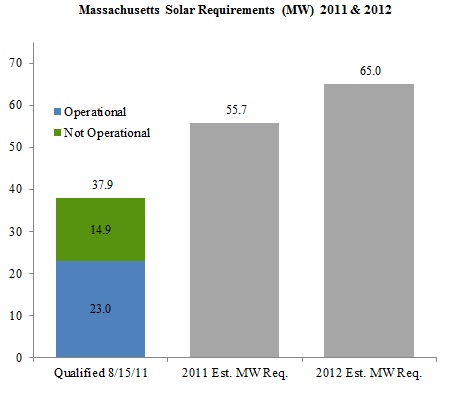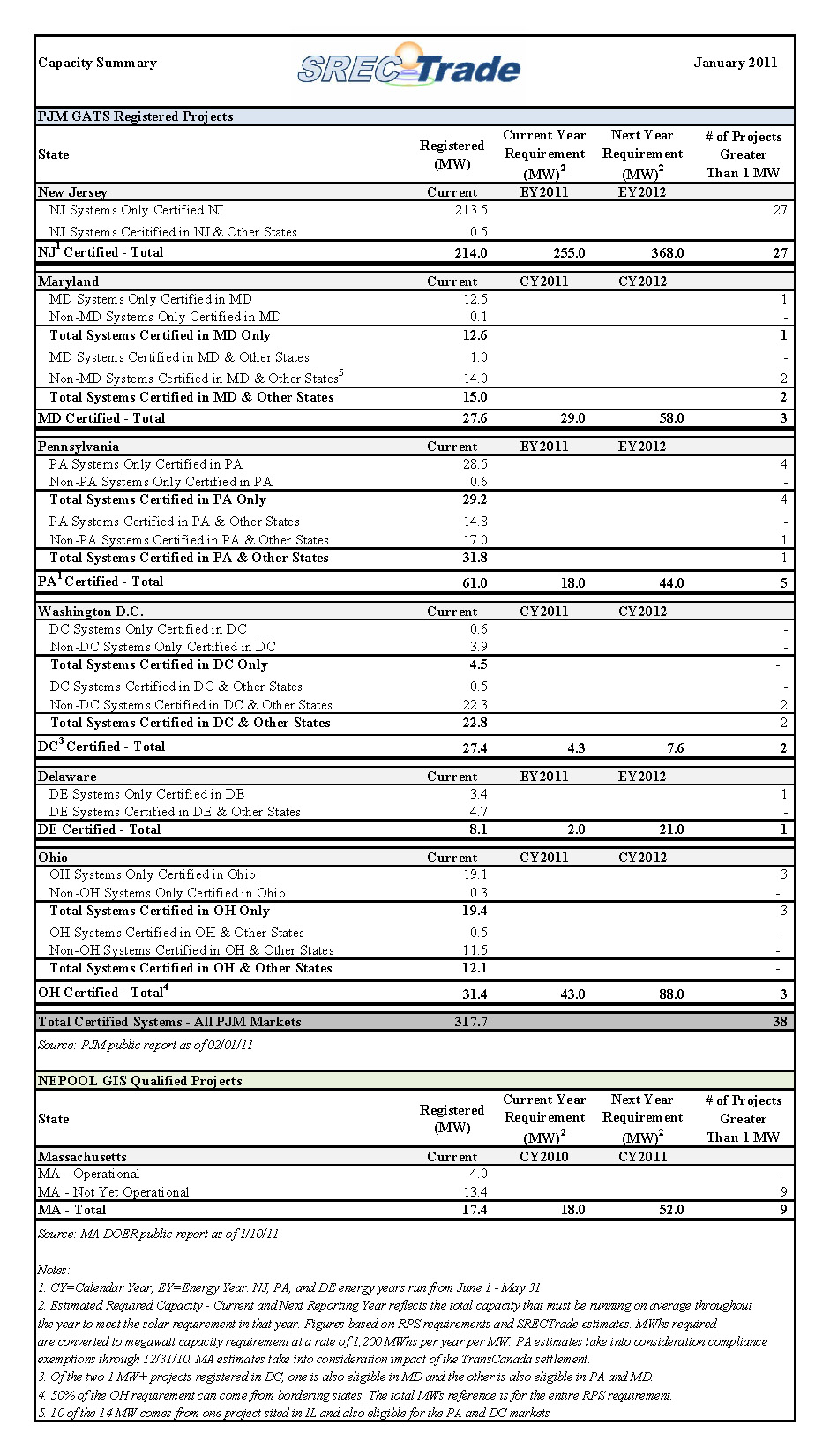Understanding the length of time that Massachusetts solar facilities can generate and sell SRECs as part of the Solar Carve-Out is key to financing solar in the state. In an earlier post, we explained the Massachusetts Last-Chance Auction in great detail. The purpose was to help stakeholders understand the conditions, if any, that would result in the SREC market dropping below $285. From there, it is also important to understand how long a facility can bank on the floor price set by the auction.
The Opt-In Term is the length of time a facility is eligible for the Last-Chance Auction
There are a few misconceptions regarding the “10-year” Opt-In Term and the 400 MW Minimum Standard Cap. For example, it might seem that the program is slated to last 10 years or until it reaches 400 MW, after which the SRECs go away. This is most definitely NOT true. The Opt-In Term actually represents the length of time that a facility that is approved for the SREC program can opt into the Last-Chance Auction, i.e. the amount of time a facility is guaranteed a floor price in the market. Once a facility is approved, this term cannot be changed – though the Opt-In Term for future projects may be adjusted by the DOER (see below).
The 400 MW Cap is a limit to the amount that will be approved for the Solar Carve-Out
Meanwhile, the 400 MW cap is actually just a limit to the capacity of projects that can be eligible for the Solar Carve-Out. The 400th MW approved for the SREC program will be eligible for the full-length of the published Opt-In Term. This means that if Massachusetts reaches 400 MW in 2015 and the Opt-In Term is still 10 years, then the Solar Carve-Out will fade out in 2025. In simple terms: the state will accept 400 MWs into the program and every accepted facility will be guaranteed a floor of $285 for “X years” from the time it is installed. “X years” will vary based on the Opt-In Term established in the year of installation.
The Opt-In Term may change for future projects
Today, the Opt-In Term is 10 years and that will not change for any existing projects. However, every year, the DOER may make a change to the Opt-In Term for NEW facilities based on the results of the last-chance auction. If there is an oversupply, then the Opt-In Term may be decreased by as much as 2 years to a minimum of 5 until 2017, and a minimum of zero thereafter. If there is a shortage, the Opt-In Term may be increased to a maximum of 10 years.
The Solar Carve-Out expires when the Opt-In Term ends for the final project approved under the 400 MW Cap
Finally, facilities can continue to sell SRECs after the Opt-In Term as long as the Solar Carve-Out program is still in place. The only difference is that those facilities will no longer be eligible for the Last-Chance Auction and therefore are not supported by the $285 floor price. The Solar Carve-Out will expire after the Opt-In Term for the final project registered under the 400 MW Cap has concluded AND all remaining SRECs created during that time have either been sold or expired. After this time, all facilities will be transferred to the RPS Class I REC market (which by that time could be worth very little).
Here are the key paragraphs taken from the DOER Solar Carve Out website worth reading carefully:
Minimum Standard Cap and Termination of the Program
The Minimum Standard is capped at 455,520 MWh (sufficient to enable the installation of approximately 400 MW of solar PV). When DOER qualifies 400 MW of solar for the program, qualification of all additional solar installations is transferred to the RPS Class I Program. Once the cap has been met, the Minimum Standard for the RPS Solar Carve-Out will be set annually per regulation to maintain market balance. The RPS Solar Carve-Out program remains in effect until all the Auction Opt-In Terms of the qualified projects and the full shelf-life years of any Re-Minted Auction SRECs have both expired, thereby maintaining the price certainty promised to all solar generators. For the year after the final Compliance Year, when the Solar Carve-Out Minimum Standard is set to zero SRECs shall cease to exist, and all generation from qualified Solar Carve-Out Renewable Generation Units shall produce RPS Class I Renewable Energy Attributes.
Opt-In Term
The Auction Opt-In Term is defined as the number of years (expressed in calendar quarters) that a project is eligible to deposit SRECs into the Solar Credit Clearinghouse Auction Account. For all projects qualified in 2010, this is set at 10 years, or 40 quarters. Any SRECs generated in this span of 40 quarters will be eligible to participate in an auction that will potentially be held each July, where they will be assured a price of $300/MWh for their SRECs (minus a $15 auction fee assessed by DOER). This mechanism sets a floor price for SRECs and gives projects long-term price assurance should they be unable to sell them directly to LSEs or there be an oversupply of SRECs. Once a project’s Opt-In Term has expired, its owner may continue to sell their SRECs until the program officially ends, but will not have the price assurance guaranteed by the ability to Opt-In to the auction.
Adjustments to Auction Opt-In Term
Long Market (SREC Oversupply) Adjustment: The Auction Opt-In Term is reduced by 4 quarters for each full 10% of the year’s Compliance Obligation that is deposited into the Auction Account. The maximum reduction per annual adjustment is two years. The minimum Auction Opt-In Term is 20 quarters or 5 years for the first 7 years of the program (through Compliance Year 2016). After that time, the minimum term is reduced to zero years, unless otherwise set by the Department of Energy Resources (DOER). Short Market (SREC Shortage) Adjustment: The Auction Opt-In Term is increased by 4 quarters for each full 10% of the year’s Compliance Obligation that is met through Alternative Compliance Payments. The maximum reduction per annual adjustment is two years. The maximum Opt-In Term is 40 quarters.
In conclusion, we will monitor the Opt-In Term as it is published each year by the DOER. The term will not change for existing projects once established, but it will impact new projects. Solar developers should consider this as they do project finance for facilities that may not be completed this year. Given the shortage in the SREC market in 2010, we do not foresee any changes to the Opt-In Term in 2011.
SRECTrade continues to offer long-term Fixed-Price and Upfront SREC payments for solar projects in Massachusetts.
Subscribe



